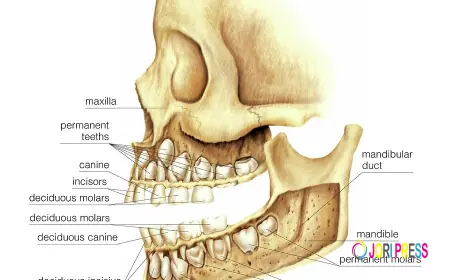Is Abdominoplasty Painful During Healing?
Is Abdominoplasty painful during healing? Learn what to expect in recovery, how discomfort is managed, and tips for a smoother healing process.

Abdominoplasty, commonly referred to as a tummy tuck, is a cosmetic surgical procedure designed to remove excess skin and fat from the abdominal area while tightening the underlying muscles. It is one of the most sought-after body contouring surgeries, particularly among individuals who have experienced significant weight loss or pregnancy. While the results can be life-changing, one of the most common questions patients have before undergoing the procedure is: “Will it be painful during healing?”
The short answer is that some discomfort is expected, but with proper preparation, effective pain management, and attentive aftercare, the recovery process is manageable for most patients. In this blog, we’ll explore what you can expect during healing, why pain occurs, how it’s typically managed, and tips to ensure a smoother recovery experience.
Understanding the Abdominoplasty Procedure
Before discussing the healing process, it’s important to understand what the surgery involves. Abdominoplasty is typically performed under general anesthesia and can take anywhere from two to five hours, depending on the complexity of the case. The procedure includes:
-
Removing excess skin and fat from the lower and middle abdomen
-
Tightening weakened or separated abdominal muscles
-
Repositioning the skin to create a smoother, firmer contour
Because the surgery involves both skin removal and muscle repair, mild to moderate discomfort is expected during the initial stages of recovery. However, advances in surgical techniques and pain management methods have significantly reduced postoperative pain compared to the past.
Why Pain Happens After a Tummy Tuck
Pain during the healing process is primarily caused by three factors:
1. Muscle Tightening
One of the core components of abdominoplasty involves tightening the abdominal muscles, especially when they have separated due to pregnancy or weight fluctuations. This can cause soreness similar to an intense core workout but on a larger scale.
2. Tissue Trauma
The surgery involves removing skin and fat, which naturally causes disruption to the tissues and nerves in the abdominal area. As your body heals, it sends signals that manifest as tenderness, swelling, and mild aching.
3. Tension on Incisions
Since the skin is stretched and repositioned, the incision site can feel tight during the first few weeks. This sensation typically improves as healing progresses.
The Stages of Pain and Discomfort During Recovery
Understanding what to expect at different stages of healing can help you prepare mentally and physically for the journey.
Week 1: Immediate Post-Surgery Phase
-
Pain Level: Moderate
-
What to Expect: You’ll experience soreness, tightness, and swelling in the abdominal region. Pain is typically most noticeable when moving, coughing, or standing upright.
-
Management: Pain is controlled through prescribed medications, and many surgeons use long-lasting local anesthetics during surgery to reduce discomfort for the first 48 hours.
Weeks 2–3: Reduced Discomfort
-
Pain Level: Mild
-
What to Expect: Most patients report significant improvement in soreness. However, mild tightness may persist as your muscles continue to heal.
-
Management: Over-the-counter pain relievers are usually sufficient at this stage. Gentle walking is encouraged to improve blood circulation and speed up healing.
Weeks 4–6: Gradual Return to Normal Activities
-
Pain Level: Minimal
-
What to Expect: Swelling begins to subside, and muscle tightness eases. Some patients may still feel mild discomfort when stretching or lifting heavy objects.
-
Management: Light exercises, as approved by your surgeon, can help rebuild strength and flexibility.
Months 2–6: Final Recovery Phase
-
Pain Level: None to Very Mild
-
What to Expect: By this stage, most patients feel comfortable resuming normal activities, including workouts. Numbness around the incision site may persist but typically improves gradually.
How Pain Is Managed Effectively
Thanks to advancements in surgical techniques and pain management strategies, recovering from abdominoplasty is far more comfortable today than it used to be. Surgeons typically use a combination of approaches to minimize discomfort:
-
Long-acting local anesthetics during surgery reduce immediate postoperative pain.
-
Prescription pain medications are provided for the first few days.
-
Non-opioid options like acetaminophen or ibuprofen are recommended later in recovery.
-
Nerve blocks may be used for patients with heightened pain sensitivity.
-
Compression garments are prescribed to support the abdominal area, minimize swelling, and improve overall comfort.
Tips for a Smoother, Less Painful Recovery
While some discomfort is unavoidable, you can take proactive steps to ensure your healing journey is as comfortable as possible:
1. Follow Your Surgeon’s Instructions Carefully
Your surgeon’s post-operative care plan is designed to minimize pain and speed up recovery. This includes guidelines on wound care, medications, and activity restrictions.
2. Use Compression Garments
These specially designed garments reduce swelling, provide support, and alleviate tension on the incision area, which can significantly reduce discomfort.
3. Sleep in an Elevated Position
Keeping your upper body slightly elevated reduces tension on the abdomen and promotes better healing during the initial weeks.
4. Move Gently but Frequently
Short, slow walks are encouraged starting as early as the day after surgery to improve circulation and prevent stiffness.
5. Maintain Proper Nutrition and Hydration
A balanced diet rich in protein, vitamins, and minerals supports tissue repair, while staying hydrated promotes faster recovery.
6. Avoid Strenuous Activities Early On
Heavy lifting, vigorous workouts, and sudden twisting movements should be avoided until your surgeon gives clearance.
Potential Complications That May Cause Pain
While most patients experience predictable, manageable discomfort, complications can lead to unexpected pain. Be aware of the following warning signs:
-
Persistent or worsening pain beyond the expected recovery timeline
-
Signs of infection such as redness, swelling, or discharge
-
Fluid accumulation under the skin (seroma)
-
Nerve irritation leading to sharp, shooting pains
Promptly informing your surgeon about unusual symptoms ensures timely intervention and a smoother recovery.
Setting Realistic Expectations
It’s important to remember that healing after a tummy tuck is a gradual process. While discomfort peaks in the first week, it steadily improves as your body recovers. Most patients feel well enough to return to light activities within two to three weeks, while full recovery may take up to six months.
A positive mindset, patience, and strict adherence to aftercare instructions can make the recovery journey far more manageable and comfortable.
Conclusion
Healing after abdominoplasty involves some degree of pain and discomfort, especially during the early stages. However, thanks to modern surgical techniques, effective pain management strategies, and proper aftercare, the recovery process is generally well-tolerated. Understanding what to expect, preparing in advance, and working closely with an experienced surgeon can make your healing journey smoother and more comfortable.
With the right approach, the temporary discomfort is outweighed by the long-term benefits of a firmer, more contoured abdomen and improved self-confidence.
FAQs
1. Is a tummy tuck painful during recovery?
Mild to moderate discomfort is common, especially during the first week, but it improves significantly with proper pain management.
2. How long does pain last after a tummy tuck?
Most patients notice reduced discomfort within two to three weeks, though complete healing can take several months.
3. What helps reduce pain after abdominoplasty?
Following your surgeon’s instructions, wearing compression garments, and using prescribed medications effectively manage discomfort.
4. When can I return to normal activities after surgery?
Light activities can typically resume within two weeks, while strenuous workouts should wait until your surgeon approves.
5. What signs of pain should I worry about?
Sharp, persistent pain or swelling accompanied by redness or discharge should be reported to your surgeon immediately.
What's Your Reaction?
 Like
0
Like
0
 Dislike
0
Dislike
0
 Love
0
Love
0
 Funny
0
Funny
0
 Angry
0
Angry
0
 Sad
0
Sad
0
 Wow
0
Wow
0



















































